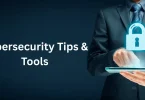In today’s digital age, our lives are more interconnected than ever before. However, as our online presence grows, online scams & protection have become pressing issues that affect individuals and businesses alike. The internet, while offering incredible convenience for communication, shopping, and remote work, has also opened the door to a growing wave of cybercrime. From phishing emails and fake websites to deceptive investment schemes and identity theft, scammers are constantly evolving their tactics.
This rise in online fraud highlights the urgent need for awareness, education, and practical strategies to safeguard personal information, finances, and digital identities.
Understanding how these scams operate—and how to defend against them—is no longer optional; it’s essential for navigating today’s connected world safely.
Understanding the Rise of Online Scams

Online scams have evolved significantly in recent years, driven by technological advancements and the increasing reliance on digital communication. Criminals have become more sophisticated, using complex tactics to trick users into giving away sensitive data or money. From phishing attacks to social engineering schemes, the methods employed by cybercriminals are varied and constantly changing. This section explores the most common types of online scams that individuals and businesses face today.
Phishing Scams
Phishing scams involve fraudulent emails, text messages, or websites designed to trick individuals into revealing personal information like passwords, credit card numbers, or Social Security numbers. These messages often appear to come from reputable sources, such as banks or well-known companies. The goal is to create a sense of urgency or importance that pressures the victim into clicking a link or downloading an attachment.
- Signs of a phishing scam include:
- Suspicious sender email addresses
- Generic greetings (e.g., “Dear customer”)
- Unusual requests for sensitive information
- Urgent or alarming messages
Fake Online Shopping Websites
With the rise of e-commerce, fake online stores have become a common scam. These sites often look legitimate, offering great deals on popular products. However, once the payment is made, the product never arrives, or the customer receives counterfeit or substandard items.
- Tips to avoid fake shopping websites:
- Always check for secure payment options (look for “https” in the URL).
- Research customer reviews and ratings.
- Verify the legitimacy of the website by checking contact information and physical addresses.
Investment Scams
Investment scams often target individuals looking to grow their wealth. These scams promise high returns with little to no risk, such as “too good to be true” stock opportunities or cryptocurrency investments. Fraudsters often use convincing tactics to persuade victims to invest money in fake or non-existent ventures.
- Red flags of investment scams:
- Guaranteed returns with no risk
- Pressure to act quickly or “limited-time offers”
- Lack of transparency or verifiable information
Social Engineering Scams
Social engineering attacks rely on psychological manipulation to trick individuals into divulging confidential information. Scammers may pose as trustworthy individuals or authority figures, such as IT personnel or government agents, to gain access to private information.
- How to protect yourself:
- Be cautious when receiving unsolicited requests for personal information.
- Verify the identity of the person making the request before providing any details.
- Avoid sharing sensitive information over email or phone.
Think this is interesting? The next section will blow your mind.
Editing Software and Workflow Tips to Boost Your Creativity
Top Photography Gear and Accessories for Stunning Shots
Drone Laws and Regulations: Stay Safe, Fly Legal Today
Best Cameras for Tech Enthusiasts That Wow in 2025
How to Protect Yourself from Online Scams
Now that we understand the various types of online scams, it’s essential to know how to protect yourself from falling victim to these attacks. There are several practical steps you can take to safeguard your personal information and reduce the risk of becoming a target.
Use Strong, Unique Passwords
One of the most basic yet effective ways to protect yourself is by using strong, unique passwords for your online accounts. Avoid using the same password across multiple sites, and include a mix of letters, numbers, and special characters. Consider using a password manager to help you generate and store secure passwords.
- Best practices for strong passwords:
- Use at least 12 characters.
- Combine upper and lowercase letters, numbers, and symbols.
- Avoid using easily guessable information like names or birthdates.
Enable Two-Factor Authentication (2FA)
Two-factor authentication (2FA) adds an extra layer of security to your online accounts. By requiring a second form of verification, such as a text message or authentication app, it makes it harder for attackers to gain access, even if they have your password.
- Benefits of 2FA:
- Provides an additional layer of protection.
- Reduces the risk of unauthorized access to your accounts.
- Available for many popular services, including email, banking, and social media.
Keep Software Up to Date
Keeping your devices and software up to date is essential for protecting yourself from online scams. Software updates often include security patches that fix vulnerabilities hackers can exploit.
- Steps to stay updated:
- Set your devices to automatically install updates.
- Regularly check for updates on your operating system, browsers, and apps.
- Update your antivirus and anti-malware programs frequently.
Be Wary of Suspicious Emails and Links
A key defense against online scams is to be cautious when receiving unsolicited emails or messages. Scammers often use emails with enticing offers or threats to lure victims into clicking malicious links or downloading harmful attachments.
- How to spot suspicious emails:
- Look for spelling errors, strange formatting, or suspicious sender addresses.
- Avoid clicking on links in unsolicited emails. Instead, visit websites directly by typing their URL into your browser.
- Don’t open attachments from unknown sources.
How Businesses Can Protect Themselves from Online Scams
Businesses are often targeted by cybercriminals due to the valuable information they hold. Online scams can result in financial losses, reputation damage, and legal consequences. This section will focus on strategies that businesses can adopt to protect themselves and their customers.

Educate Employees About Cybersecurity
Employee education is one of the most effective ways to reduce the risk of falling victim to online scams. Employees should be trained to recognize phishing emails, social engineering tactics, and other forms of cyberattacks.
- Key areas to cover in training:
- Recognizing phishing and scam emails
- Best practices for securing business data
- How to report suspicious activity
Implement Robust Cybersecurity Measures
Businesses must invest in strong cybersecurity measures, such as firewalls, antivirus software, and intrusion detection systems, to safeguard against online scams and attacks. Regularly reviewing and updating these systems is crucial for maintaining effective protection.
- Essential cybersecurity tools:
- Firewalls to prevent unauthorized access
- Encryption tools to protect sensitive data
- Anti-malware and antivirus software to detect and remove threats
Monitor Financial Transactions Regularly
To prevent financial scams, businesses should implement systems to regularly monitor transactions and flag any suspicious activities. Fraudulent transactions can be detected early, reducing the impact of online scams.
- Best practices for monitoring:
- Regularly review bank statements and payment processing systems.
- Implement fraud detection tools to identify unusual transactions.
- Work with payment providers that offer secure transaction processing.
The Future of Online Scams & Protection
As technology continues to advance, so do the tactics used by cybercriminals. The future of online scams will likely involve even more sophisticated techniques, such as artificial intelligence-driven scams and deepfake technology. To stay ahead of these threats, it is essential to stay informed about the latest trends and best practices in online protection.
- Emerging threats to be aware of:
- AI-driven phishing attacks
- Deepfake scams that use manipulated video and audio
- Ransomware attacks targeting businesses and individuals
Conclusion
As the internet continues to play an increasingly integral role in our daily lives, the risk of online scams & protection threats grows. It is essential to stay vigilant, educate yourself about potential scams, and take proactive steps to protect your personal information. With the right knowledge and tools, you can safeguard yourself against these digital threats. Remember, your online safety is in your hands. Online scams & protection are crucial components of navigating the digital world, so always stay informed, be cautious, and take the necessary steps to secure your online presence.
FAQs
What are the most common types of online scams?
Phishing scams, fake online shopping websites, investment scams, and social engineering attacks are among the most common online scams. These scams trick individuals into revealing personal information, money, or access to sensitive accounts.
How can I protect myself from phishing scams?
To protect yourself from phishing scams, always verify the sender’s email address, avoid clicking on suspicious links, and never share sensitive information through email. Be cautious of emails that create urgency or look too good to be true.
What should I do if I fall victim to an online scam?
If you fall victim to an online scam, report it to the relevant authorities or the platform where the scam occurred. Change any compromised passwords, monitor your financial accounts, and consider contacting your bank or credit card company for added security.
How do I know if a website is safe for online shopping?
Look for secure payment options like “https” in the URL and check for a valid privacy policy. Research customer reviews and ensure the website has clear contact details and customer support. If a deal seems too good to be true, be cautious.
What is two-factor authentication, and how does it help protect me?
Two-factor authentication adds an extra layer of security by requiring you to provide a second form of identification, such as a code sent to your phone. This makes it harder for scammers to access your accounts, even if they have your password.






